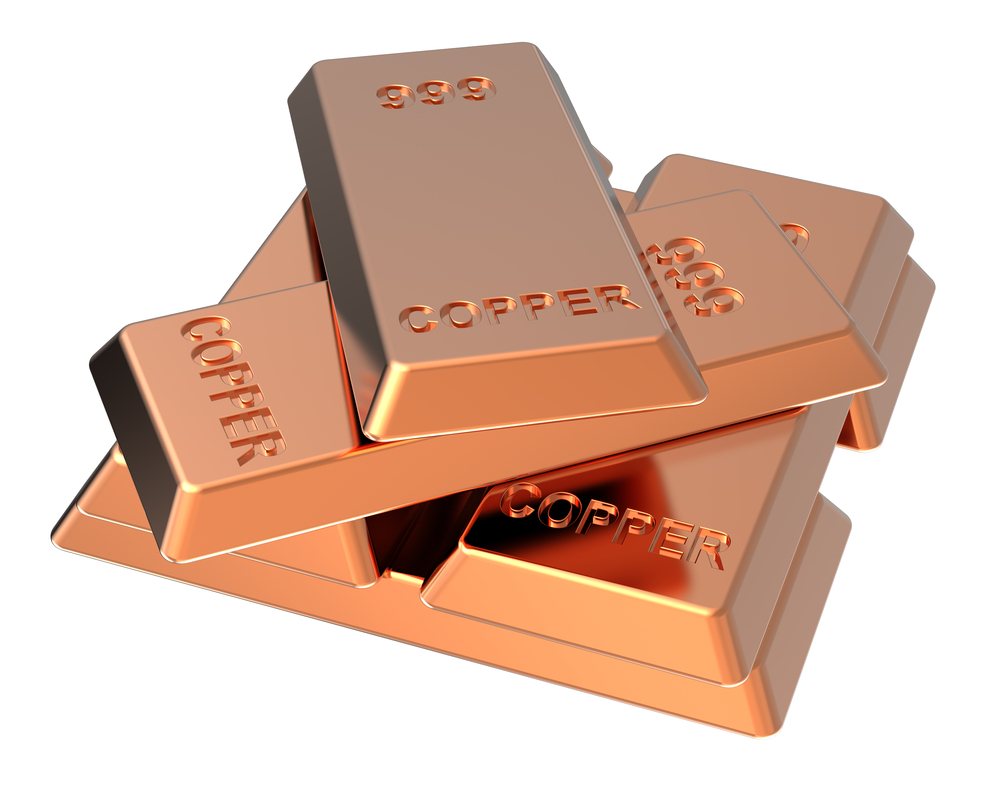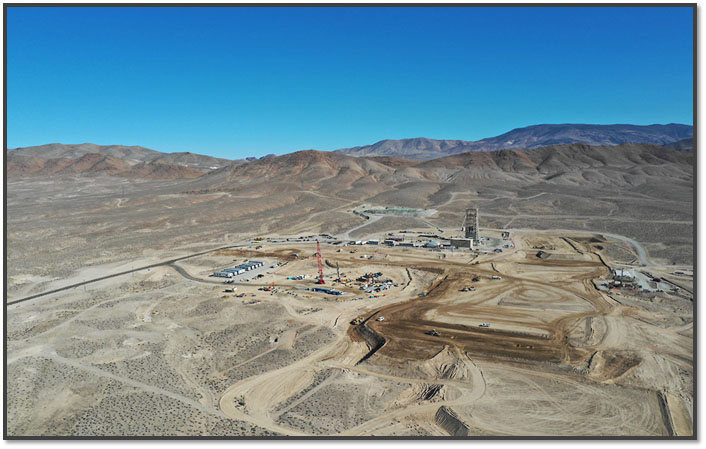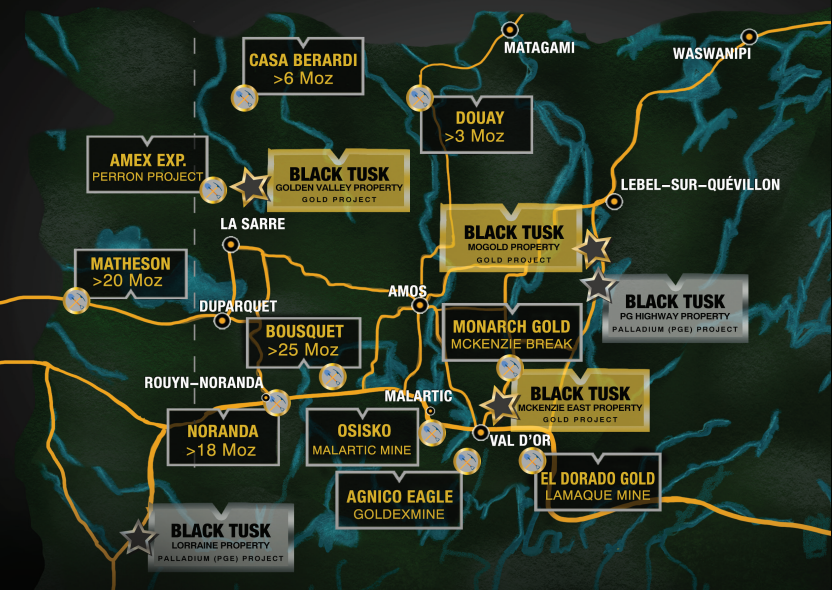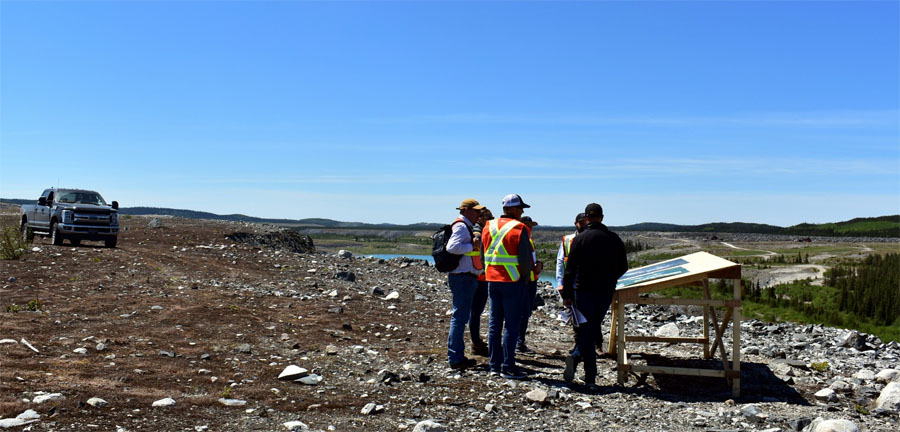TICKERS: AVL; AVARF, FRO, LYC, MAT; MRHEF, , MON, REEMF, UCU; UURAF
Luisa Moreno: Top REE Stock Picks
Interview
Source: Brian Sylvester of The Critical Metals Report††(7/26/11)
 As uncommon as they may be, rare earth elements are all around you—in your laptop, your cell phone and your flat-screen television. But despite their frequency in our everyday lives, investors still have a lot of false preconceptions about these 16 elements. In this exclusive interview with The Critical Metals Report, Luisa Moreno, a senior analyst with Toronto-based Jacob Securities, delves into the unique challenges rare earth miners encounter and how those can be opportunities for investors.
As uncommon as they may be, rare earth elements are all around you—in your laptop, your cell phone and your flat-screen television. But despite their frequency in our everyday lives, investors still have a lot of false preconceptions about these 16 elements. In this exclusive interview with The Critical Metals Report, Luisa Moreno, a senior analyst with Toronto-based Jacob Securities, delves into the unique challenges rare earth miners encounter and how those can be opportunities for investors.
Luisa Moreno: Any major news like that is likely to have some impact on mining stocks. However, when news of the discovery first surfaced, the media entertained the idea as though it could be a viable and significant discovery. I don't think it is. I tend to believe that it would be cheaper for the Japanese to invest in one of the most advanced rare earth projects outside China rather than pursuing a project 3-6 km. down on the ocean's surface. I can't imagine how that can be more economical relative to other ongoing projects right now.
TCMR: Mining rare-earth elements is more complex than other mining because of the need to separate the different elements from one another. Investors often receive conflicting information about REE. If you could clear up any misconceptions about REE mining, what would it be?
LM: As you mentioned, there are 16 elements. It's important to understand that each element has different uses, target markets and prices. We can't talk about rare earths as one product or one material. For instance, the magnet industry in North America is not very strong. It's far stronger in Japan and Korea. Companies trying to target that market will need to go to Asia to find partners. The catalyst market is far broader in North America. Companies that want to sell cerium for catalyst applications will find a lot of potential partners in the U.S.
The other aspect is metallurgy. Most of the projects are dealing with minerals that have not been processed commercially. In that sense, they are early stage and it's a bit like a science project. It's important for investors to track the progress of the metallurgy. For instance, Avalon Rare Metals Inc. (TSX:AVL; NYSE.A:AVL; OTCQX:AVARF), which has complex mineralogy, delayed their feasibility study by an additional four months to improve its metallurgical process, however other companies are only in the initial phase of their metallurgical testing. Compare that to Molycorp Minerals (NYSE:MCP), which has a well-understood metallurgy and has processed rare earths for many, many years.
When mining does actually commence, investors should expect to see variations not just in grades but in actual distribution of the 16 elements. Small variations will likely be common, but there may be occasions where unanticipated changes in rare earth distribution would significantly impact revenues and even costs.
Furthermore, the price correlation between the 16 elements is not very well understood and variations in price trends are likely to affect mine economics.
TCMR: There are also deleterious elements in there, like thorium or uranium, that can make disposing of the tailings a difficult task.
LM: That's definitely another consideration: the environmental impact. There are guidelines in place to properly dispose of uranium, thorium or any other radioactive materials that might be present in a deposit. But the consideration right now is that deposits that have a high percentage of radioactive elements will probably have to endure a more comprehensive permitting process that could cause delays. Also, the companies that deal with those radioactive elements will likely face higher operating costs associated with handling and disposal of these elements.
TCMR: If the metallurgy proves to be difficult, could that mean that some of these companies would be forced to go with a straight concentrate versus separating out the individual metals?
LM: There is not much of a concentrate market outside China right now, but if they cannot prove in the lab that it's possible to economically separate those elements, I don't see anybody else in the world willing to do that. These elements are not really useful as a concentrate. In some instances, they can be used in a combination, like didymium, which is a combination of neodymium and praseodymium or in combination with other elements like zirconium. The elements can be used as concentrate in some applications but it will not be economic for companies to sell all the product like that.
TCMR: Can you tell us about the applications and locations of rare earths?
LM: Rare-earth elements are used in technologies, such as computers, light-emitting diodes and cell phones. They also aid in the efficiency of alternative energy products like wind turbines and solar panels. The elements themselves can be found all over the world, but most of the manufacturing of these components is in Asia due to inexpensive labor costs and economic focus.
TCMR: In a recent report, you said that continued economic turmoil in the U.S. and Europe could lead to the withdrawal of project financings. That would likely separate the pretenders from companies with legitimate REE projects.
LM: We will likely see a difference in the market for projects that are more advanced and companies that have partners like Frontier Rare Earths Limited (TSX:FRO). Frontier announced that it could sign an agreement in the next three to five months with KORES, a Korean resource company, where the company will take 10% of the Zandkopsdrift deposit after the completion and publication of a preliminary economic assessment (PEA) and potentially 10% next year upon a positive feasibility study. That's the sort of things that the market wants to hear—some validation from future partners that could bring financing and expertise. Avalon also said recently that it has a few memorandums of understanding with unnamed parties.
TCMR: Do you think the market would've preferred to see a bit more transparency from Avalon about who those new partners are?
LM: Absolutely. Memorandums of understanding are a good starting point for sure: they are agreements that potential collaborators sign to say, "We're watching you. We want to do a little more due diligence to see the viability of your project." But it's different from an agreement like Frontier's with well-defined milestones and a disclosed partner.
The market is getting much more knowledgeable about the space and locating companies that are able to differentiate themselves.
TCMR: Developing Ucore Rare Metals Inc. (TSX.V:UCU; OTCQX:UURAF) Bokan Mountain property in Alaska would require the lowest capital costs, less than $200M, of any of its peers. What should we expect from the company's scoping study, which is due in the fourth quarter?
LM: The capital expenditure is low in relation to scale. Frontier wants to produce 20,000 tons/year. Avalon is talking about producing anywhere from 10,000Ė15,000 tons/year. Ucore is less than 5,000 tons, and may even start with 3,000 tons. The operation is much smaller.
The company did tell me that it is looking for technologies that will make the project cheaper, such as using chemical processing vessels made of more economic materials. Other companies, such as Lynas Corporation (ASX:LYC), seem to be using more expensive equipment and have experienced relatively higher capital costs. It appears however, that there are new processing technologies and equipment, and some companies like Ucore and Great Western Minerals (TSX.V:GWG, OTCQX: GWMGF) are investigating them.
TCMR: You have a target price of $1.09 on Ucore and it's currently trading around $0.72. However, the company could get to that target because this project might get support from the U.S. government.
LM: The government may support them by fast-tracking the permitting and giving favorable loans. That would essentially make the government a development partner, at least in the short term.
TCMR: Why would the government do that?
LM: The government might do that because Ucore is the best known project right now on U.S. soil that may have an economic deposit with high percentage of heavy elements. Many of these elements are used in military applications. They are of great national security importance. It's an opportunity for the government to be independent from China for these elements.
TCMR: Bokan Mountain is near a former uranium mine. Is there uranium at this property?
LM: The Ross Adam Mine, the former uranium mine, is not part of the Dotson Zone, which is Ucore's principal economic target. According to the company, the uranium and thorium concentrations are low in that area.
TCMR: Do you think that the government would also be willing to support the Bear Lodge Project in Wyoming that Rare Element Resources Ltd. (TSX:RES; NYSE.A:REE) is working on?
LM: Rare Element would certainly benefit if the government implements policies that involve fast-track permitting. But, in the case of Ucore, the governor of Alaska is pushing a lot of these policies that are supporting the company directly. Rare Element, as well as all the rare earth companies, would also benefit if the U.S. government decided to lend at trivial rates to rare earth companies. I have a target price of $18.43 on Rare Element and it's currently trading around $10. 26.
TCMR: Rare Element has done some metallurgical testing on Bear Lodge and had 90% recovery rates—certainly among the highest of its peers.
LM: The company's deposit has primarily bastnaesite, which is a mineral that has been processed commercially, and ancylite—a less-known RE mineral. It has tried to use the same process as Molycorp, but reported in the NI 43-101 that it was not very successful. Rare Element came up with its own process and it seems it could end up with one of the highest recovery rates in the industry. If they are able to reproduce these results at a commercial scale, that will be great for them.
TCMR: The company has $73M in cash, which should carry it through the feasibility study that is currently underway. What are you expecting from that feasibility study?
LM: I expect it to be positive. I've run my own economic assessment of the project. I expect the company to have some of the lowest cash costs per kilo because of the type of deposit and the potential to have good recovery rates.
TCMR: Are there any other stories that have been overlooked in this sector?
LM: Montero Mining and Exploration Ltd. (TSX.V:MON), a small company in Africa, is progressing very well. It has a similar deposit to Molycorp's with low percentage of heavy elements, but it is trying to fast track its project to production. It recently signed a memorandum of understanding with Korea Resources Corp. (Kores).
There are other projects in countries off our radar like Russia, India, Sri Lanka and Malaysia. We should expect to see increasing production from existing mines and new mines coming online in those regions, where some companies that are not listed could affect the market. We will probably hear more about that in the coming years.
TCMR: Isn't Montero's main project Wigu Hill in Tanzania?
LM: Yes. It has various grades depending on the zone. I think the average is about 5%, but in some zones it has 15%. The metallurgy has been cracked, so it doesn't need to spend too much time on that. I believe that it could be in production within two years.
There could be other stories like that with simple deposits and simple metallurgy that come to the market fairly quickly. As long as they have offtake agreements and clients to sell those products to, I think that's very positive for them.
TCMR: Why do you support a neodymium-equivalent measure of resources versus a percentage of total rare earth oxides, or TREO?
LM: It's very simple. Deposits that have gold and copper often have a smaller percentage of gold grade than copper, but you do not base your analysis solely on that. The size of the resource and grades count but the price of gold versus copper is also very important in assessing the economics of the project. It's no different for the rare earths. Some of the prices of these elements, like some of the most obscure ones like thulium, a heavy element, have historical prices above $2,000/kg. Then you have other elements like lanthanum and cerium, which are historically cheaper and two years ago had prices below $10/kg. A neodymium-equivalent approach shrinks the differences within grades and better expresses the differences in prices.
TCMR: There is a lot of potential for mergers and acquisitions in this space. Who's going to take out whom?
LM: Consolidation has already started, in a way. Molycorp has been actively looking into vertical integration and expanding potential products. It purchased AS Silmet in Estonia and Arizona-based magnet company Santoku America.
Molycorp has relatively lower percentages of the heavy elements, like dysprosium, which is one of the most critical elements and one of the rarest. In order for Molycorp to be a leading rare earth company, it should be able to provide at least most of the critical elements. For it to be able to provide dysprosium at quantities that satisfy the market, it will have to find other deposits. That's why I suggest that Molycorp could potentially acquire Ucore or Matamec Explorations Inc. (TSX.V:MAT) in Quťbec. Those two companies are smaller and cheaper, but they offer a good amount of these elements to balance their total production. I have a speculative buy rating with a target price of $1.50 on Matamec. It's trading at around $0.40.
Rare Element Resources could definitely benefit from that as well. The company has a little higher percentage of the critical elements, but lower production. If Rare Element acquires or merges with another rare earth company with high percentage of heavies and critical elements, it can increase its total production, and at the same time have a better balance of rare earth distribution with higher amounts of the heavy rare earths.
We should see consolidation over the next 15 month, especially as companies come out with progress reports on their metallurgy and PEAs.
TCMR: Thanks.
Luisa Moreno is a senior mining and metals analyst at Jacob Securities Inc. in Toronto. She covers industry metals with a major focus on electric and energy metal companies. She has been a guest speaker on television and at international conferences. Luisa has published reports on rare earths and other critical metals and has been quoted in newspapers and industry blogs. She holds a bachelor's and master's in physics engineering as well as a PhD in materials and mechanics from Imperial College, London.
Want to read more exclusive Critical Metals Report articles like this? Sign up for our free e-newsletter, and you'll learn when new articles have been published. To see a list of recent interviews with industry analysts and commentators and learn more about critical metals companies, visit our Critical Metals Report page.
DISCLOSURE:1) Brian Sylvester of The Critical Metals Report conducted this interview. He personally and/or his family own shares of the following companies mentioned in this interview: None.
2) The following companies mentioned in the interview are sponsors of The Critical Metals Report: Ucore Rare Metals Inc., Rare Element Resources Ltd.
3) Luisa Moreno: I personally and/or my family own shares of the following companies mentioned in this interview: None.I personally and/or my family am paid by the following companies mentioned in this interview: None.



























































